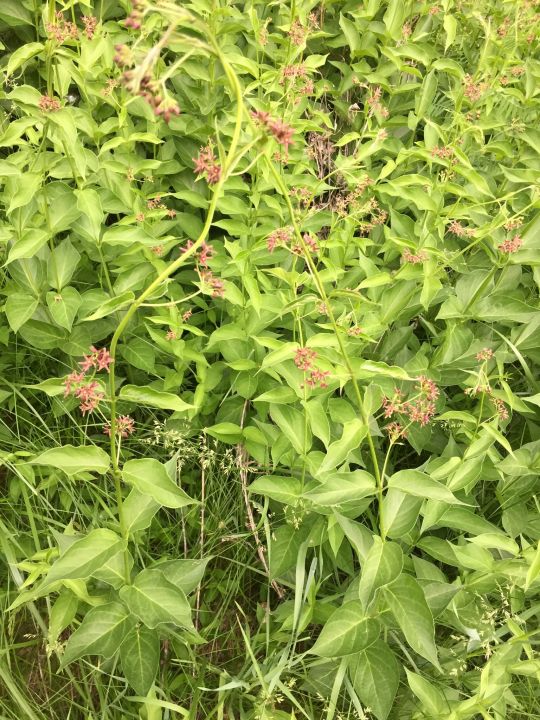
Dog Strangling Vine
(Vincetoxicum rossicum & Vincetoxicum nigrum)
Description
This group of plants black swallowwort and pale swallow-wort are both classified as Dog Strangling vine. Originating in Eurasia they came over in the 1800s initially being planted in gardens. It is a member of the same family as milkweed. Producing seeds that look very similar to the milkweed, except the dog strangling vine has seed pods that are much skinnier.
They like the open sun but can also live in shaded areas, they grow by climbing along with other objects such as other plants. This climbing on other plants may cause the “ host” plant to die. They can climb up to two meters high and have leaves that span 12cm on either side of the vine. They can grow in colonies where they cause the most harm, via blocking new growth and impeding existing growth to native species.
They reproduce via wind-blown seeds or via old root systems.
-Little to no value for wildlife.
The leaves are oval with pointed tips, with 5 petals.
The plant was originally introduced to Ontario in the early 1800s and has been extremely prolific ever since.
Range
Southern Ontario, Southern Quebec
Impacts & Control
Often crowds native plants and prevents their development. The vines grow in dense patches which often prevent other species from developing in the area. Leaves and roots are toxic to livestock and are avoided by native herbivores. The roots also prevent other plants from growing within a certain proximity. Negative impacts can be seen in monarch butterfly populations as eggs laid on the vines do not reach maturity.
Digging out the vines is the best control method as you are most likely to remove all the roots, if the whole root is not removed then the plant will grow back.
It is also possible to plant the native species Canadian Anemone, it is an early germinator and can outcompete dog strangling vine by shading it in the early spring.
Listed as a restricted species in Ontario as it is a very high threat to native species.




